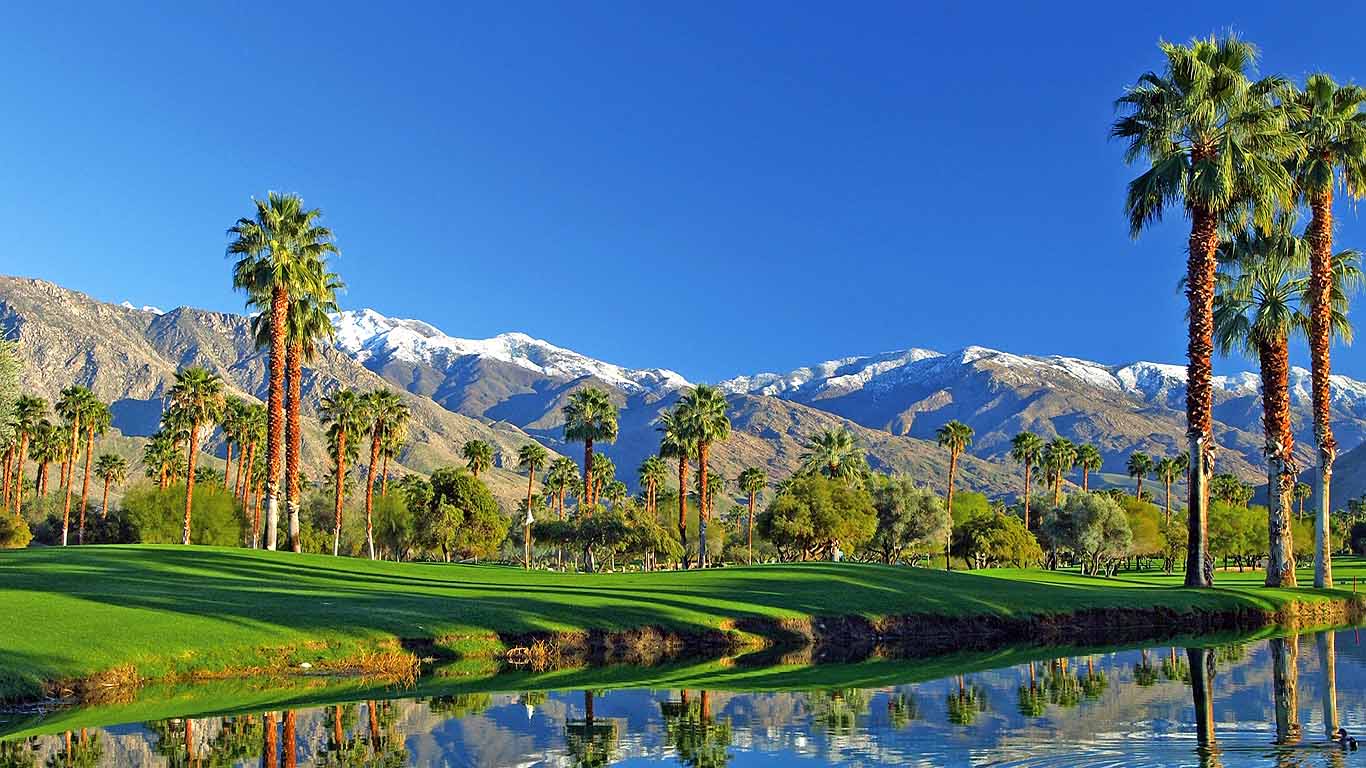
The main reason the resort destination is here in the first place, though, is nature.

Great museums are open year-round, from the Palm Springs Art Museum to the Palm Springs Air Museum, a 65,000sqft (6039sqm) space dedicated to World War II combat aircraft. It’s a real draw for lovers of architecture, with many beautiful homes opening up for tours and a whole lot of events happening around town. Outside summer, it’s more manageable, if still toasty year-round.ĭown to the success of the music festival, there are now a bunch of other events that use the site during the year one popular attraction is Modernism Week, which takes place around Palm Springs in February. From June to August, the average temperatures are around the 104F (40C) mark (hardly ideal festival camping conditions).

The summers in Palm Springs are hot – and when we say hot, we mean it. Coachella takes place over two three-day weekends in April – and there’s a good reason for that. Generally this part of the state has little of interest to see, although a little further west, the Anza-Borrego Desert State Park does have much spectacular scenery.The explosion of music, art and boho-chic that is the Coachella Valley Music and Arts Festival dates back to 1999 and has since grown into the most famous music festival in the world. This lake has many white sand beaches, and may well have been a popular tourist attraction except that its waters are cloudy and polluted, with a high mineral content, have an unpleasant smell, cause extreme humidity and harbor vast numbers of flies. Just down the road from Thermal, Box Canyon Road (Avenue 66) leads to I-10 along an unusual narrow canyon with gray/brown dusty-looking rocks, in layers which are quite twisted and distorted, this being one of several places in the Palm Springs area where the effects of the San Andreas Fault are visible.ĬA 111 continues southeast to the Salton Sea, formed as recently as 1905 when the Colorado River breached a dike and flooded a large area of low-lying agricultural land. Many orchards of California dates flourish in the sunshine some are abandoned and overgrown with many dead trees, contributing to the slightly shabby atmosphere. The elevation drops to sea level and below - this part of California is exceedingly hot and humid during summer, and the nearby town of Thermal is often the hottest place in the whole US. Then is abruptly replaced by rather uninspiring farmland and small, dusty settlements with a distinct Mexican feel. Southeast of Palm Springs, the super-expensive suburbia continues 20 miles to La Quinta and Indio, The temperature is around 35° lower than in the desert below, which can be followed for 50 miles on a clear day, with the rigid grid pattern of the streets extending eastwards to the horizon. The land on top is rocky with pine trees and bushes, squirrels and many species of birds. The cable car ($36/$23.50 for adults/children in 2020) is perfectly safe but rocks alarmingly when crossing its supporting pylons. On the lower slopes, right next to downtown Palm Springs are the Indian Canyons, the main hiking location close to town. The best (and quickest) way to experience the mountains is via the Palm Springs Aerial Tramway, reached by a road that climbs up Chino Canyon, just north of town - the last section is quite steep and can be somewhat of a struggle for some vehicles in the summer heat.

Snow often persists on the 11,000 foot peaks until June, when the temperature 10 miles away on the valley floor may be well over 100☏. The San Jacinto range is the highest in California south of the Sierra Nevada they border the Coachella Valley to the south and support a wide range of climate zones. The land north of Palm Springs marks the start of the Mojave Desert - a vast sandy plain with only occasional habitation, although the immediate north east is more hilly, and here the Little San Bernardino Mountains rise to 5,000 feet and are covered with the many curious plants of Joshua Tree National Park.


 0 kommentar(er)
0 kommentar(er)
